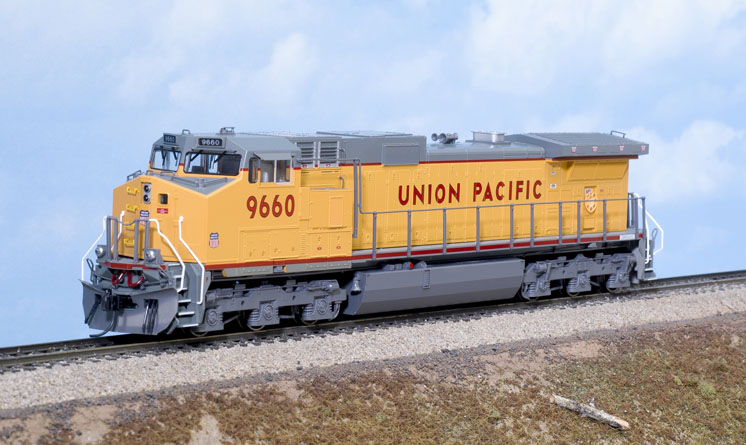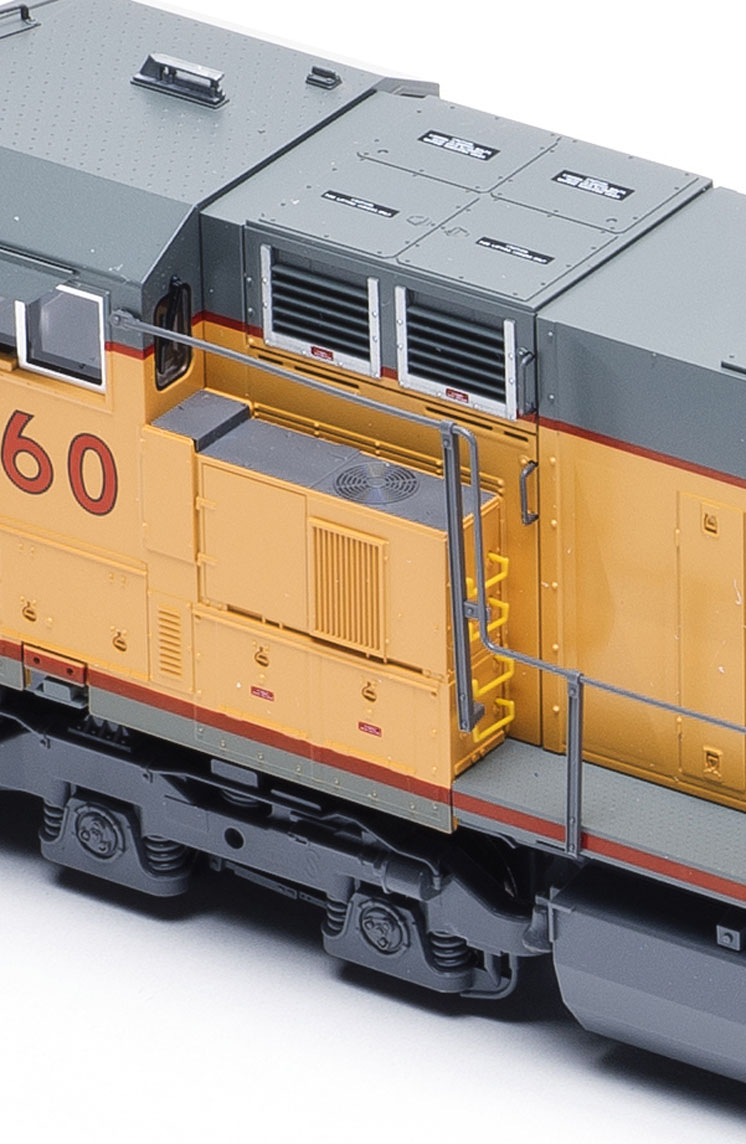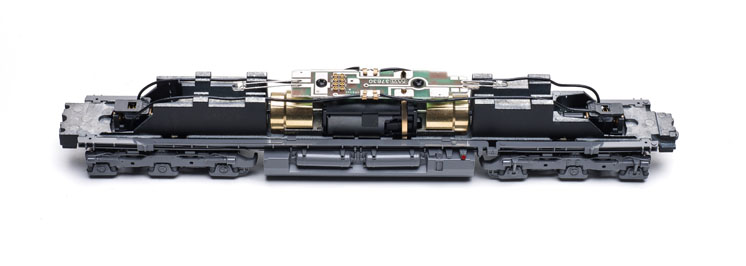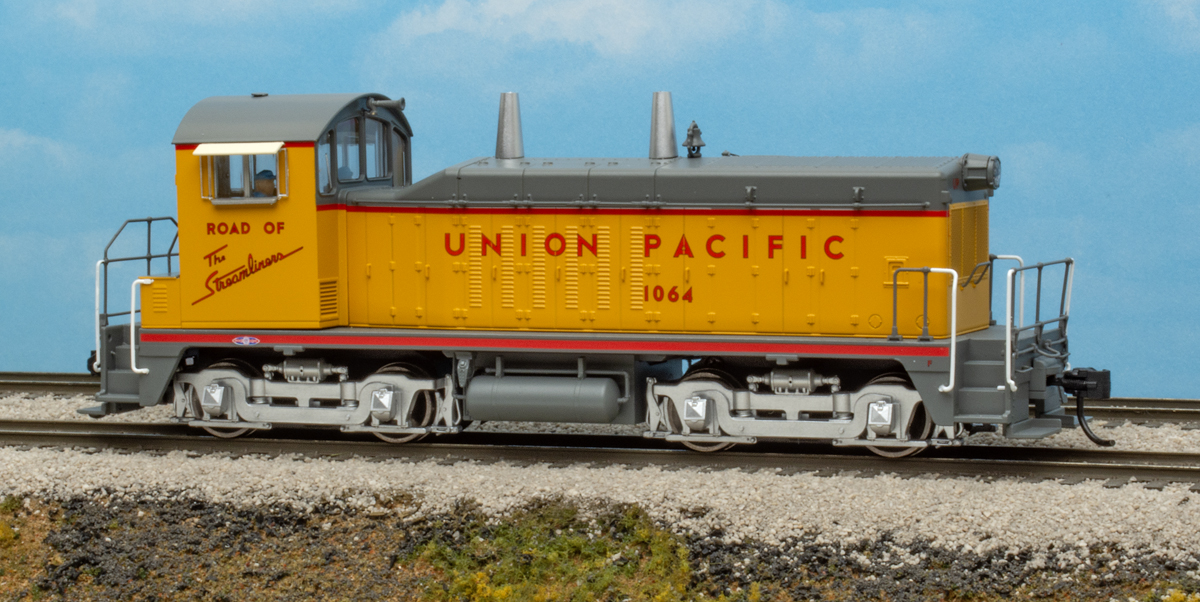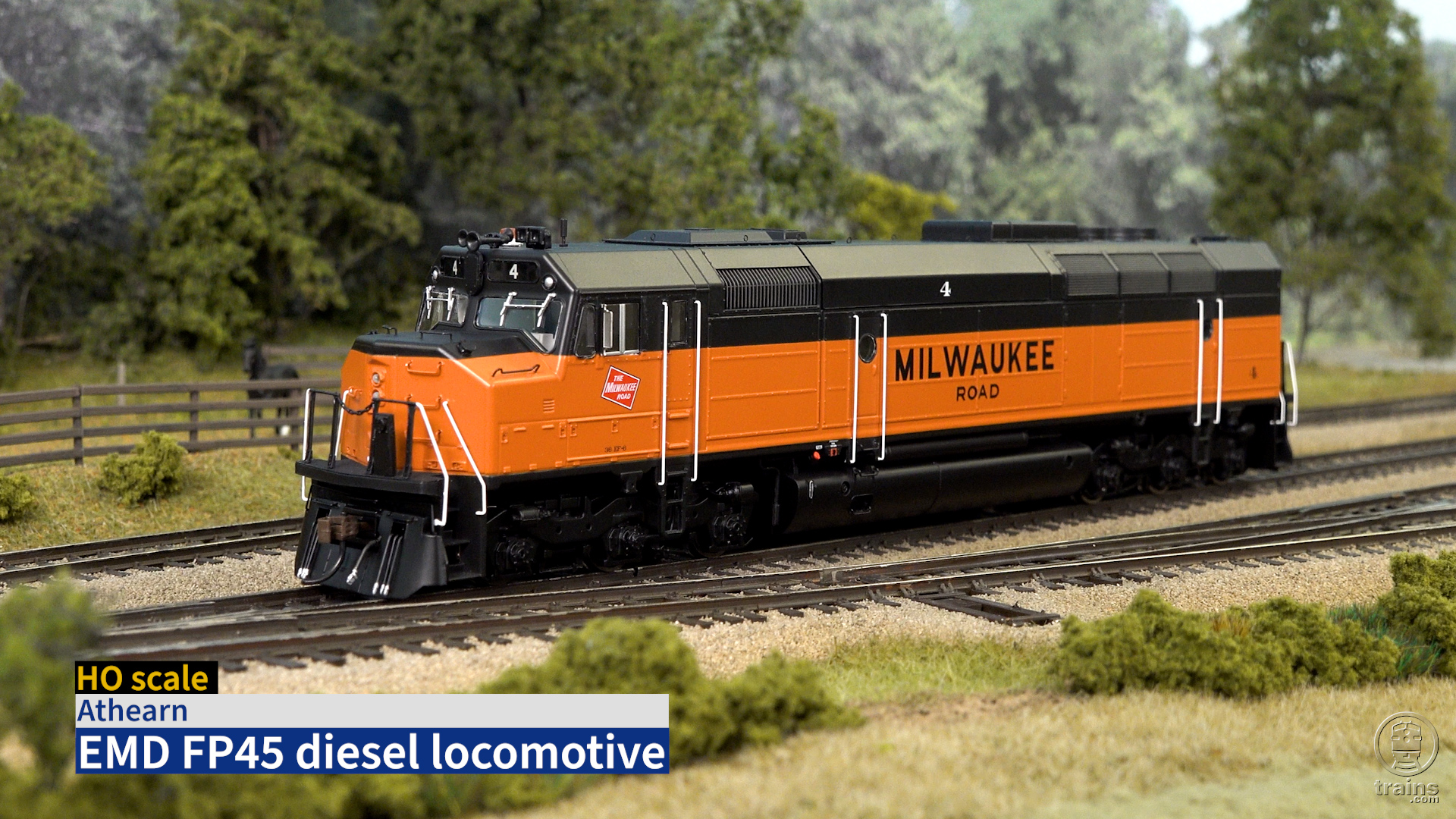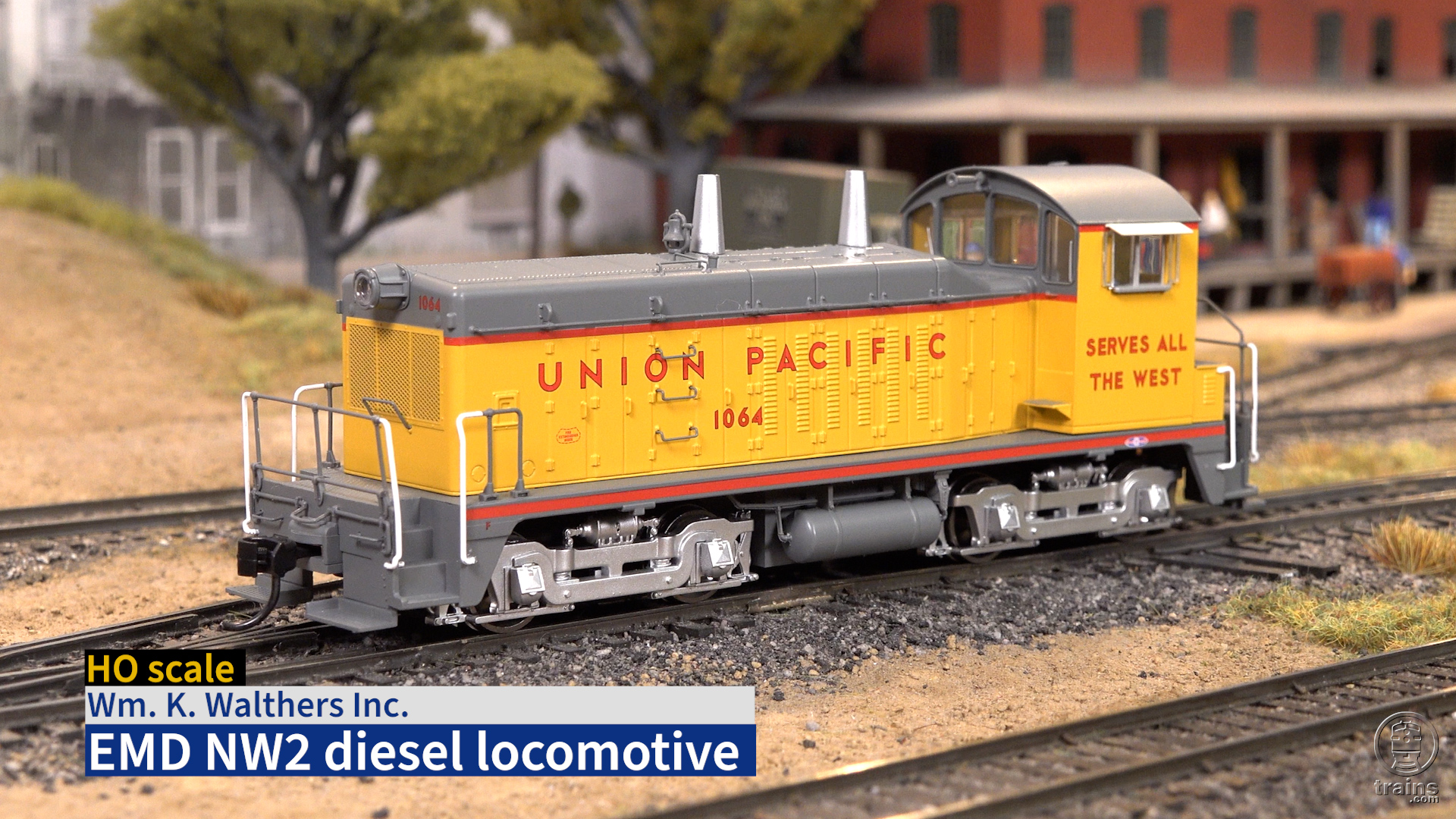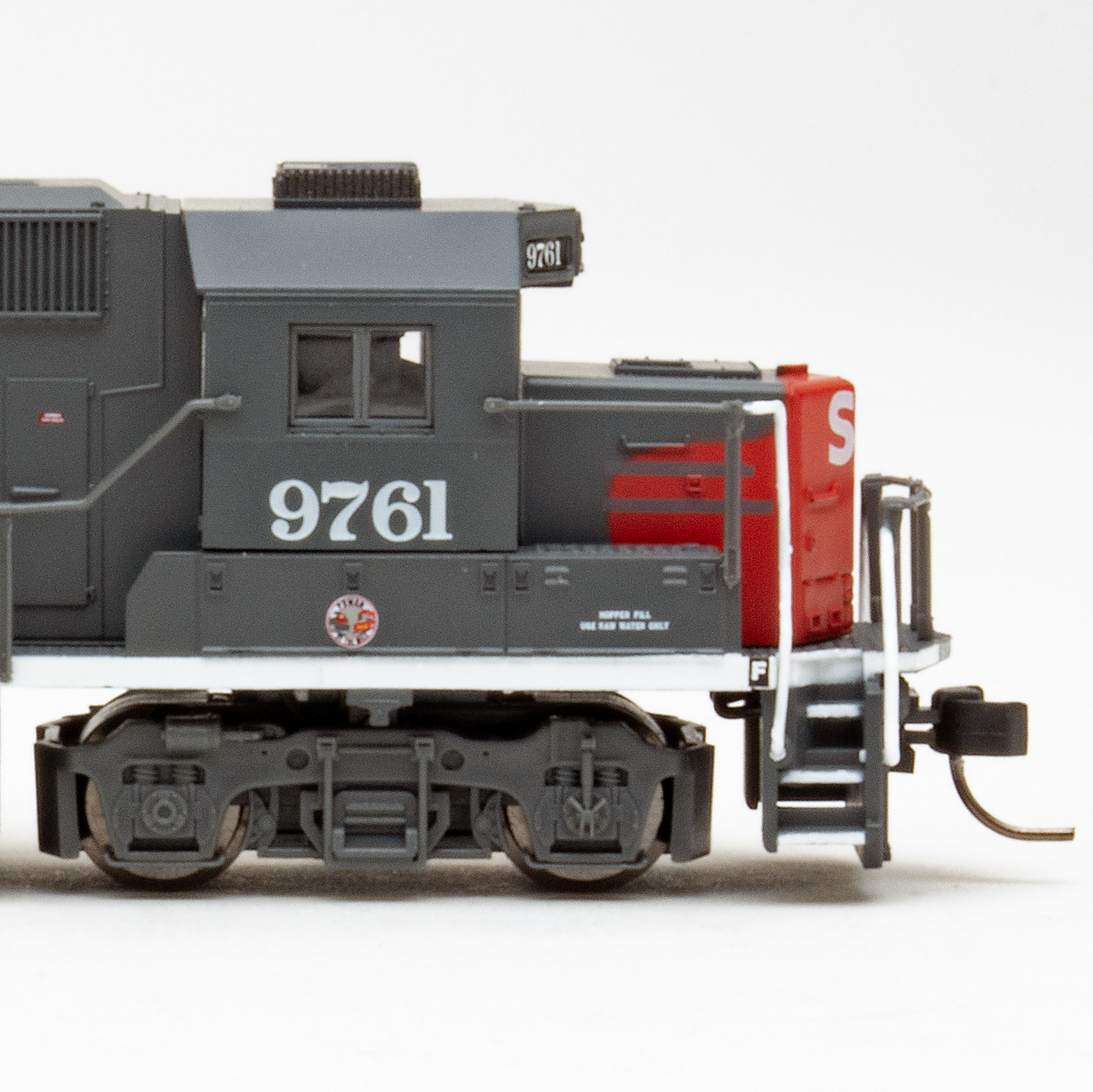For more than 20 years, the General Electric C44-9W, the most popular locomotive of GE’s Dash 9 series, has maintained a dominating presence on North American main lines. The prototypes were only a couple years old when Kato released its first HO scale Dash 9, reviewed in the September 1996 Model Railroader. This latest release features roadname-specific details to accurately model the Southern Pacific and Union Pacific (ex-SP) prototypes. The direct-current (DC) version we tested has an upgraded mechanism that’s easy to convert to Digital Command Control (DCC). The model is also available with a factory-installed ESU LokSound Select dual-mode decoder.
The prototype. General Electric produced nearly 1,800 C44-9W diesel-electric locomotives between 1993 and 2004. An improved version of its Dash 7 and Dash 8 series predecessors, the Dash 9 featured a 4,400 hp 7FDL16 diesel engine and direct-current traction motors. During the same production period, GE produced the AC4400CW, which was very similar to the C44-9W except for its alternating-current traction motors and related AC equipment.
The Dash 9 introduced GE’s new high-adhesion (HiAd) locomotive trucks that along with computer-aided wheel slip control added up to an 11 percent increase in all-weather adhesion over the Dash 8. Other improvements included electronic fuel injection and a split cooling system that led to increased fuel economy and lower emissions.
Even though the Dash 9 has been replaced by the GEVO series in the GE product line, most of the C44-9Ws still work the rails today.
The model. The dimensions of the Kato locomotive match a builder’s diagram reproduced in The Car and Locomotive Cyclopedia of American Practice (Simmons-Boardman, 1997). The well-defined molded details include engine-access doors and grills that are properly placed per prototype photos.
Our review sample models Union Pacific no. 9660, which was built as part of a 101-unit order for the Southern Pacific in 1994. In 1996 UP took over the SP. All the SP Dash 9s were eventually repainted in UP livery.
The Kato Dash 9 accurately includes the SP style ditch lights, which were mounted above the pilot deck. Another enhancement from the earlier Kato release is the battery box area behind the fireman’s side of the cab, which now includes a detailed air-conditioning unit.
The model’s many separate detail parts are all factory applied. These parts include grab irons, cab sunshades, windshield wipers, and the Sinclair antenna. The handrails and stanchions are flexible engineering plastic to resist breaking.
The 1996 release modeled an early version of the GE HiAd trucks with a separately applied, rounded stiffener on the sideframes between the outside and middle axles. Correct for the SP and UP prototypes, this latest Kato release models a later version of the HiAd truck sideframe with a less pronounced bulge in that location. The molded bearing cap detail is also correct.
Inside the cab is a detailed one-piece interior, including seats for the locomotive crew. Kato sells a six-pack of seated train crew figures for a manufacturer’s suggested retail price of $13.
The model is smoothly painted with sharp color separation. The Armor Yellow used on the model looks a bit too orange to my eye. The placement of the lettering, heralds, and warning stencils matches prototype photos. Even the tiniest printing such as fire extinguisher inside on the nose door is visible under magnification.
Mechanism. After removing the front and rear coupler boxes, I carefully squeezed the plastic body shell to disengage the locking tabs along the bottom. Lifting off the body shell revealed a can motor with a brass flywheel on each end mounted in the center of a die-cast metal chassis. Universal shafts transfer power from the motor to the truck-mounted gearboxes. Two die-cast metal weights are positioned over each gearbox.
The printed-circuit (PC) board is attached to the top of the mechanism via two Phillips head screws. A golden-white light-emitting diode (LED) is soldered to each end of the board. These LEDs illuminate the directional headlights. Plastic tubes transfer light from the front LED to the number boxes and ditch lights in addition to the headlight.
Converting the DC version of the Kato Dash 9 to DCC involves simply removing the jumpers from the eight-pin socket on top of the PC board, then plugging in a decoder equipped with an 8-pin plug.
There’s also room to add a sound system. The plastic fuel tank has an enclosure for a 28mm round speaker as well as sound holes in the bottom of the tank.
Another option for those who wish to add sound to the model without converting to DCC is to operate the model with the Kato Sound Box. (See my review in the June 2015 issue). This sound system connects to a DC power pack and uses Kato Sound Cards that contain sound files of specific prototype locomotives. Kato has recently released a GE 3rd Generation Sound Card that would be appropriate for the Dash 9.
Performance. During testing, our DC version featured the smooth and quiet mechanism we’ve come to expect from Kato. Lights turned on and the locomotive started creeping along at 2 scale mph with only 1.25 volts (V) of track power. At the motor’s maximum operating voltage of 12V, the Dash 9 reached 78 scale mph. This is close to the prototype’s standard top speed of 70 mph. It’s also an improvement over Kato’s earlier 1996 Dash 9 release that had a 94 scale mph top speed.
The locomotive has a long wheelbase, so you’ll need a layout with curves no sharper than a 22″ radius. After installing an ANE Model motor decoder (see my review in the January 2017 issue). I headed down to our staff layout, the Milwaukee, Racine & Troy, and put the Dash 9 to work.
The model easily negotiated a yard ladder of no. 6 turnouts without any binding in the trucks. Next I coupled the locomotive to a test train and sent it around a 1.5 percent climbing curve followed by a steady 3 percent upward grade. The Dash 9 single-handedly pulled 15 HO freight cars up the steep hill without slipping or stalling. On straight and level track, the locomotive can pull 40 free-rolling HO freight cars.
Like many other HO locomotives, the knuckle couplers are plastic parts. As I do on my own models, I suggest replacing the plastic couplers with those made of metal, especially on locomotives that will be heavily operated.
The Kato GE C44-9W remains a smooth operator and accurate HO model of a modern-era workhorse. The factory-installed detail and DCC friendly mechanism, not to a mention the availability of a sound-equipped version, make this Dash 9 better than ever.
Price: $195 (DC, no sound), $295 (ESU LokSound decoder)
Manufacturer
Kato U.S.A. Inc.
100 Remington Rd.
Schaumburg, IL 60173
www.katousa.com
Era: 1994 to present (as detailed)
Road names: Union Pacific (nos. 9660 and 9632), Southern Pacific (nos. 8104 and 8132)
Features
▪▪All-wheel drive and electrical pickup
▪▪Blackened metal wheels in gauge
▪▪Eight-pin Digital Command Control socket (DC version)
▪▪ESU LokSound Select decoder (DCC version)
▪▪Five-pole skew-wound motor with dual brass flywheels
▪▪Kato knuckle couplers at correct height
▪▪Light-emitting diodes (LEDs) illuminate headlights and ditch lights
▪▪Minimum radius: 22″
▪▪Weight: 1 pound, 1.5 ounces





